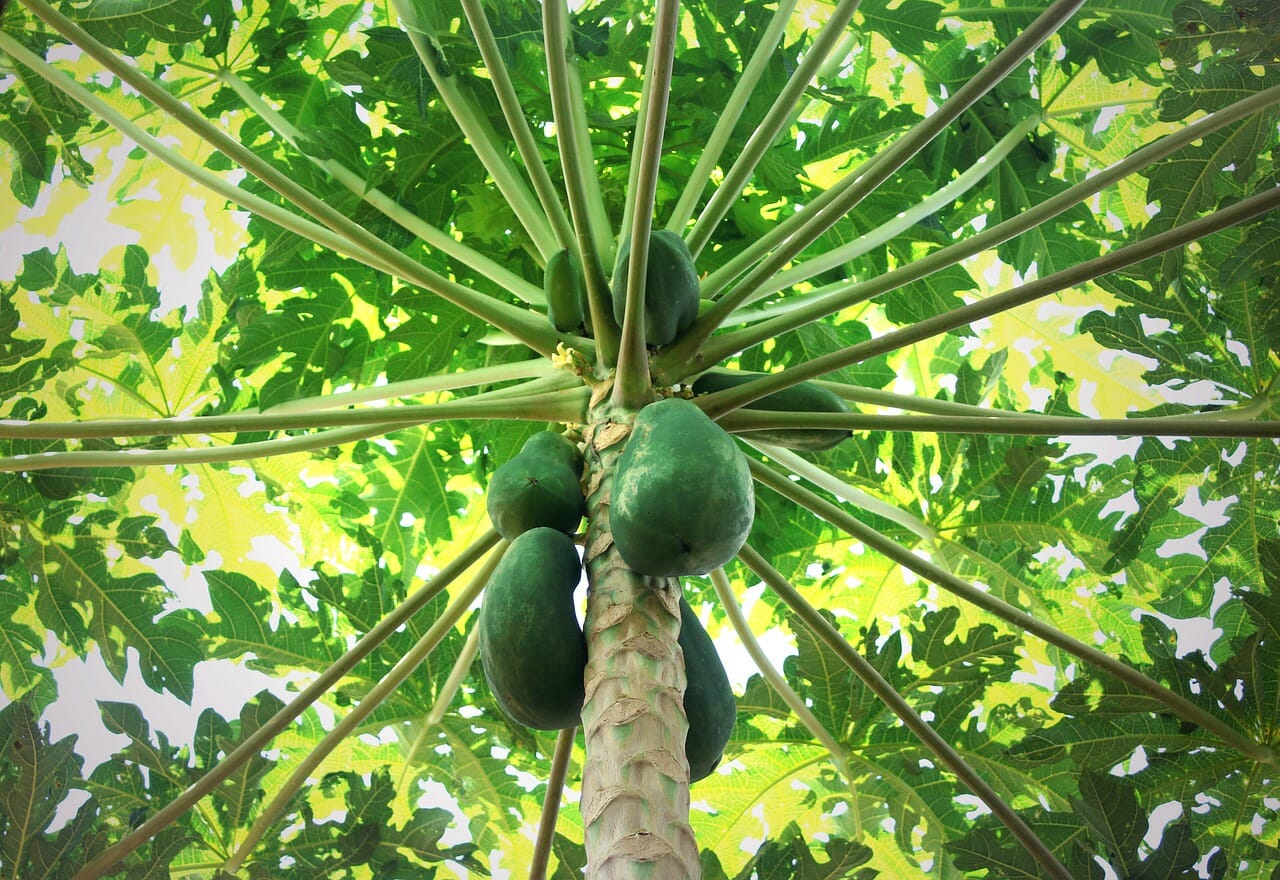Pawpaws are small trees native to North America. They can sometimes be found as far north as New England. They are also common in the southeast and the east-central United States. They are usually found growing in moist forests. They grow to a height of between 20 and 40 feet. They have a lifespan of from 80 to 120 years.
They are also commonly known as persimmon, although they are unrelated to the actual persimmon fruit or other species in the genus Diospyros.
Pawpaws produce edible fruits that are often used in baking. They have a long history of use in folk medicine. They are also used in herbal remedies.
In addition to the fruit, the wood of the paw is also used. It is a light wood that is used in construction. It is also famous for firewood. You can also use it to make furniture and musical instruments. The tree also retains moisture, making it a good choice for wet soil. It is also drought-tolerant. It thrives in U.S. Department of Agriculture plant hardiness zones 5 through 9.
Ideal Growing Conditions for Pawpaw Trees
Soil
Pawpaws are like soil rich in organic matter. They grow best in the soil of the southern United States. They also prefer acidic soils.
Water
Pawpaw trees like to be watered regularly. It helps them develop strong roots and healthy leaves. Pawpaws that are near a water source requires minimal water supplement. You must ensure that your soil is well-drained to avoid waterlogging around the plants.
Sunlight
Pawpaw trees need at least six hours of sunlight each day, preferably more than eight hours. When they are young, they will grow faster and more vigorously if not exposed to intense sunlight. This is because they have a limited ability to photosynthesize. As they grow older, sunlight exposure becomes less critical.
Fertilizer
Pawpaw trees need fertilizer every two times per year during the growing season. They need to be fertilized in the spring after their leaves have grown and when you want them to produce berries during summer. You should use well-balanced fertilizers such as 10-10-10, either in liquid form or in granules. You can also incorporate the use of organic matter such as compost, manure, and fish emulsion.
Propagation of Pawpaw Trees
Pawpaw fruit is propagated by grafting. Pawpaw trees can be grown from seed, but the seeds are not viable for propagation. The best time to take cuttings from a pawpaw tree is when it is dormant in winter. Cuttings will root quickly and grow well in pots.
Pests and Diseases of Pawpaw trees
Pawpaw trees are susceptible to diseases and pests, especially those that cause fungal infections such as Verticillium Wilt, Rhizoctonia Root Rot, and Fusarium Wilt. It is vital to control these pests before they spread to your pawpaws or other plants in the garden.
Insect Pest
Several insects can attack Pawpaw trees, including aphids, whiteflies, spider mites, and scale insects. Control these pests by using pesticides or organic products such as insecticidal soap on the leaves of the trees or applying a pesticide spray on the branches of the trees.
Pest Control Strategies
• Keep weeds and grasses away from Pawpaw trees.
• Prune pawpaw trees in early spring to remove dead branches, twigs, and other weak areas on young trees.
• Remove weeds in Pawpaw groves using a hand tool or hoe to avoid damaging tender branches that may be prone to disease or injury.
• Maintain good watering practices to prevent dry conditions that may cause disease and insect infestation.
Common Shortcomings With the Pawpaw Tree
Yellowing
Pawpaw tree leaves turn yellow in hot, dry weather. This is a natural process that occurs as the trees mature. It is not caused by disease or insects but results from the trees using energy to produce chlorophyll to produce food for the fruit. This process is similar to a human using energy to create food for their body.
Loss of fruit
Pawpaw trees can lose their fruit, usually in early spring. The cause of this loss may be due to freezing temperatures or harsh winds during the winter months. You can prevent this loss by protecting the tree from frost and wind damage and planting it in an area that will receive adequate light and water during the winter months.
The fruit has a concise shelf life due to its high acid content, which causes it to decay in storage quickly.
Conclusion
Pawpaws are an excellent source of nutrition for humans and livestock. They have many uses in the home and garden, including making tea, jelly, syrup, and pie fillings. They also make syrup for sweetening fruit drinks, baking, and pickling syrup.
Pawpaws can be grown as an ornamental trees in the garden or as a food source for wildlife. The fruits are easy to harvest from the tree with a simple hand spade or wooden rake. Pawpaw trees can be propagated easily from seed or cuttings; however, they grow slowly compared to other fruit trees.




